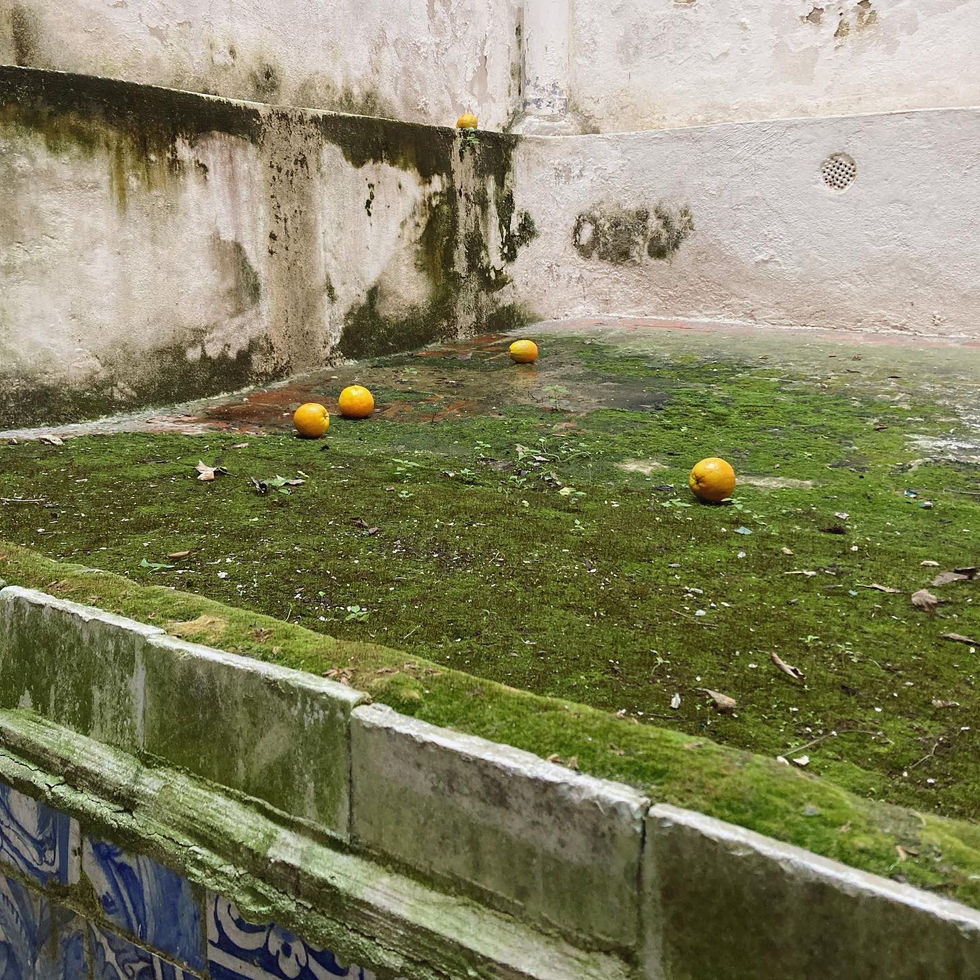Create Your First Project
Start adding your projects to your portfolio. Click on "Manage Projects" to get started
Keren Benbenisty: BLURANJ
Exhibition
December 2021
Figura Avulsa
Keren Benbenisty: BLURANJ
December 18, 2021, 4—7pm
By appointment through January 10, 2022
Figura Avulsa is pleased to present a solo exhibition by Keren Benbenisty: Bluranj, the latest chapter in her ongoing investigation on the themes of migration, loss and displacement. The project unfolds by following the iternerary of oranges from Israel and Palestine back to Portugal — where she is currently a resident at AiR351.
I spent the transformative year of 2020 in Israel. There, I developed a body of work, Tristeza, named after the Tristeza Virus—a plant-based disease which has caused millions of citrus trees worldwide to die over the past 100 years. The name Tristeza, which means sadness in Spanish and Portuguese, was coined in the 1930s by a Brazilian farmer who helplessly watched the trees in his orchard gradually decline. Tristeza is an ongoing project of my most recent research, including a film, outlining a conceptual inquiry that encapsulates my desire to create a blue orange tree, Bluranj, as a way to stimulate and represent a deeper conversation on this fruit’s iconic and charged representation within Palestinian/ Israeli culture and society.
In 2017, I began my research on the popular Israeli Jaffa orange brand where I explored the duality of the orange symbol, inherent within Israel-Palestine culture and identity. In the early 19th century, the orange industry in this region was lucrative. Yet, within this economic trading, the orange quickly became affiliated and recognized as the ultimate Zionist symbol that signified working the land, as well as technological progress. As a result, Jaffa oranges became one of the quintessential symbols of the State of Israel, whilst also the emblem of the lost Arab-Palestinian land, a signification that has been erased entirely from the Israeli collective narrative.
I expanded my research on transgenic plant engineering by working with scientists at the Volcani Agriculture Institute in the department for Enhanced Citrus Species. My goal was to change the DNA of the orange and reverse the color of the fruit into blue, promoting the creation of a new species, a hybrid, a mutation of Blue and Orange. Altering one of the most distinct symbols of this land and inventing a new strain, conceptually suggests a poetic read on the continuous conflict of identity politics in both nations.
Bluranj is a name I coined for the new imaginary species. It is a portmanteau of blue and orange, with the addition of the letter “J” to mark the Sanskrit origin of the “orange” name—‘naranj’. It takes five years to create a new citrus species, which is said to be the time it takes people to acclimatize to a new environment. It might be also the time necessary for the surreal bluranj trees to become real. This project is ongoing, until I set the roots of Bluranj trees, to offer a new view in the landscape where they will be planted.
—Keren Benbenisty
Keren Benbenisty was born in Israel in 1977 and moved to Paris in 1998, and currently lives and works in New York, NY. In 2004 she graduated from the Ecole Nationale Superieure des Beaux-Arts de Paris and attended California Institute of the Arts. Benbenisty was an artist-in-residence at Skowhegan School of Painting and Sculpture in 2009 and has been the recipient of numerous international grants and residences, including the Joan Mitchell Foundation Painters & Sculptors Grant in 2019.
Recent exhibitions include: Point of Departure, The Drawing Center, New York, NY (2019); Open the Land to the People, Soloway, Brooklyn, NY (2019); Fajja, Petach Tikva Museum of Art, Petach Tikva, Israel (2018); Apparatus for a Utopian Image 2.0, Centre for Contemporary Arts Prague, Czech Republic (2018); Unexpected Encounter, Arts Maebashi, Gunma, Japan (2018); and Under Erasure, Tel Aviv Museum of Art, Israel (2014). This year, Keren Benbenisty’s 4-channel video and sound installation Half-Life, 2017, has been acquired by Arts Maebashi in Japan.
The exhibition is made possible by the generous support of Air351 and FLAD.




















